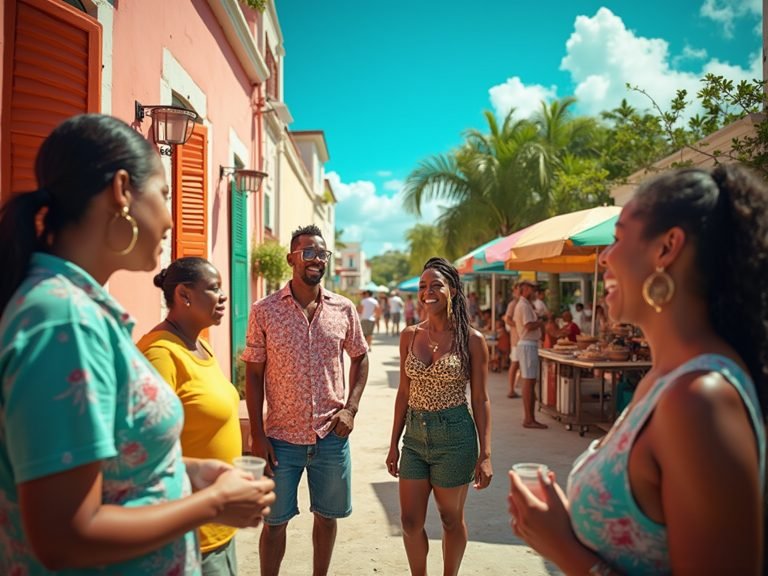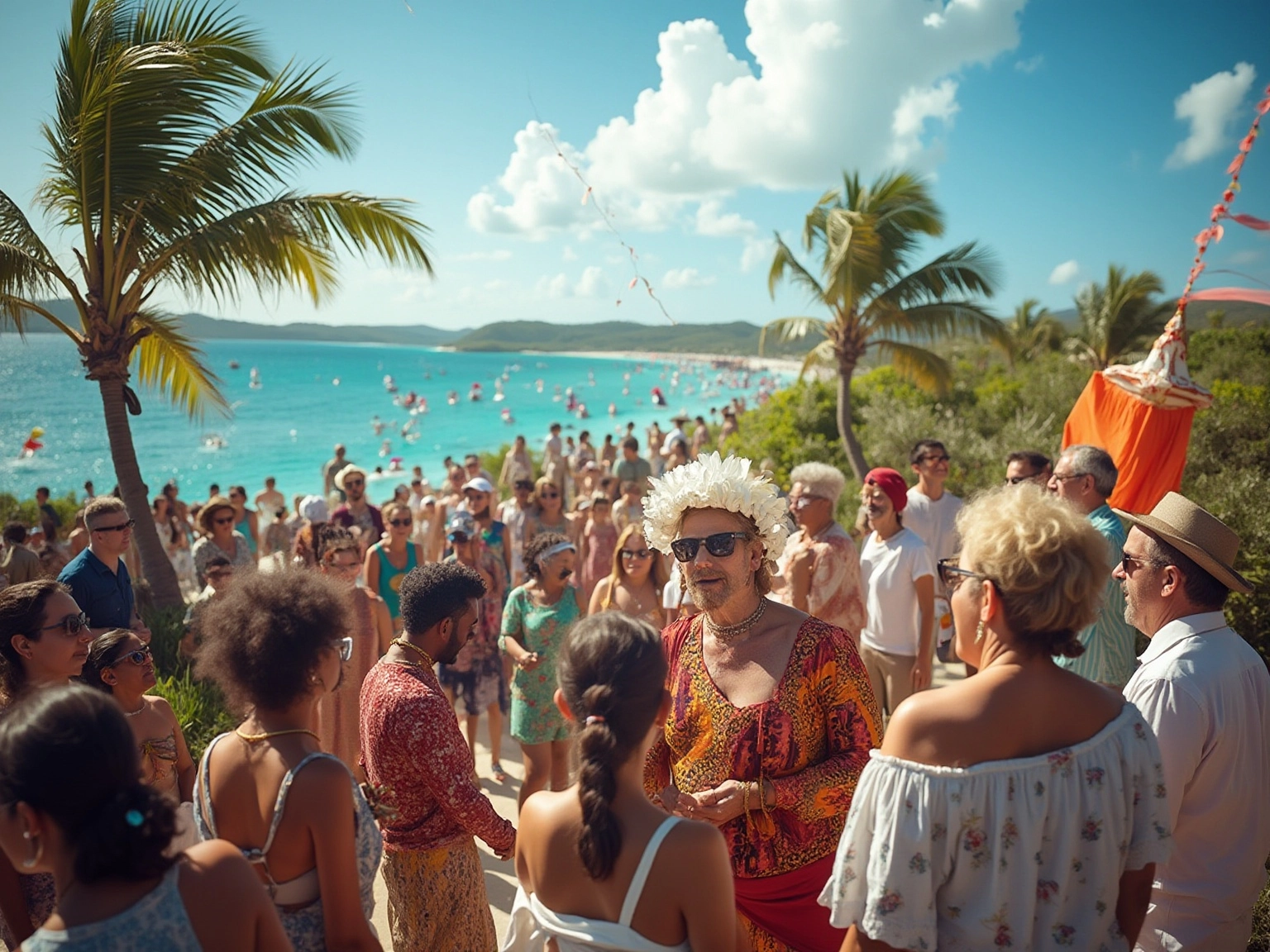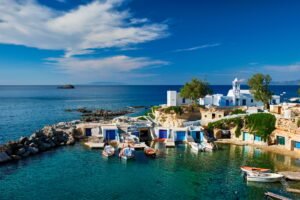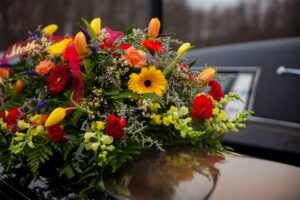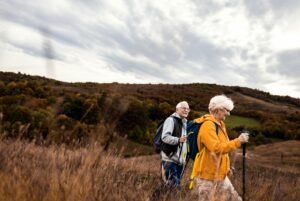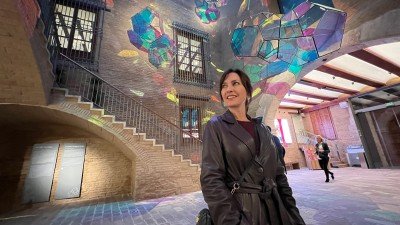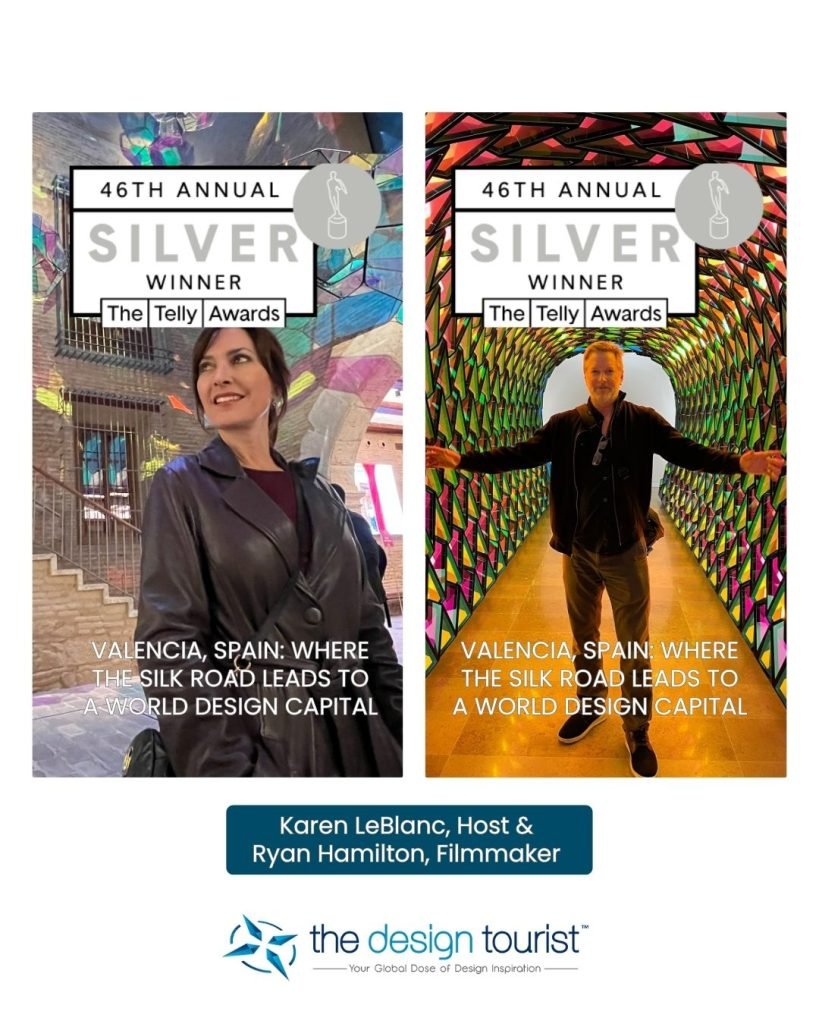Overview
This article takes you on an exciting journey into the vibrant cultural identity and community dynamics of the people of Bermuda! You’ll discover how historical influences and contemporary practices shape this beautiful island. Bermuda’s unique blend of British, African, and Native American heritage shines through in its lively festivals, stunning art, and intricate social structures.
But it’s not all smooth sailing! The article also dives into the challenges that globalization and tourism bring, threatening to unravel this rich cultural tapestry. As you read, imagine the colorful experiences awaiting you in Bermuda, and feel the warmth of its community. It’s a place where history and modernity dance together, inviting you to explore and appreciate its unique charm!
Key Highlights:
- Bermuda is a British Overseas Territory located in the North Atlantic, consisting of around 181 landmasses.
- The islands were first encountered by Spanish explorer Juan de Bermudez in 1505, with permanent settlement established in 1612 by the English Virginia Company.
- Bermuda’s identity is shaped by a blend of British, African, and Native American influences, reflected in its architecture and cultural practices.
- Flora Duffy won Bermuda’s first Olympic gold medal in the women’s triathlon at the 2020 Summer Olympics, marking a significant achievement for the territory.
- The island’s population is projected to be around 56,937 in 2025, with a diverse demographic composition of 55% White and 45% Black individuals.
- Bermuda’s culture features a mix of colonial legacies and ethnic diversity, with significant contributions from African heritage evident in music and culinary traditions.
- Key festivals, such as the Festival of the Performing Arts, celebrate local talent and foster community pride.
- Tourism plays a crucial role in Bermuda’s economy, providing cultural exchange opportunities while also presenting challenges in preserving local heritage.
- The island faces challenges like globalization and systemic racism, but initiatives like Creatives Culture Labs promote cultural education and community engagement.
- Religion, primarily Christianity, is central to Bermudian life, influencing social values and community cohesion.
Introduction
Bermuda, a breathtaking archipelago in the North Atlantic, is so much more than just a picturesque getaway! It’s a vibrant tapestry of history, culture, and community waiting for you to explore. With roots tracing back to early colonial encounters, these islands have blossomed into a melting pot of influences—from British customs to rich African heritage. You can see this cultural landscape come alive in Bermuda’s traditions, festivals, and artistic expressions, all thriving amidst the challenges of modern life.
As you dive deeper into the heart of Bermuda, you’ll discover a unique story that celebrates resilience and fosters a deeper understanding of its diverse community. The ongoing dialogue around cultural preservation and identity is at the forefront as the islands navigate the complexities of tourism and globalization. So, are you ready to uncover the vibrant experiences that await you in this stunning destination?
Geographical Overview and Historical Context of Bermuda
Bermuda, a charming British Overseas Territory nestled in the North Atlantic Ocean, is located about 1,000 kilometers east of the United States. This stunning archipelago features around 181 landmasses, with seven main islands linked by bridges, creating a picturesque landscape just waiting to be explored! The islands were first encountered by Spanish explorer Juan de Bermudez in 1505, but it wasn’t until 1612 that permanent settlement took root, thanks to the English Virginia Company.
The island’s historical narrative is deeply intertwined with its colonial heritage, which has significantly shaped its identity. This unique blend of British, African, and Native American influences has woven a rich societal fabric that characterizes the people of Bermuda today. You can see the impact of colonial history in various aspects of life here, from the architecture to the vibrant festivals, reflecting a diverse heritage that continues to evolve.
Recent discussions about the island’s history have brought to light key events that have shaped its cultural landscape. For instance, did you know that the 2020 Summer Olympics marked a historic milestone for Bermuda? Flora Duffy triumphed in the women’s triathlon, earning the territory its first Olympic gold medal and making it the smallest overseas territory to achieve this feat! This accomplishment not only showcased the region’s athletic prowess but also served as a reminder of the area’s resilience and spirit.
Understanding the historical population growth and settlement patterns reveals how these dynamics have influenced contemporary society. The landmasses have experienced different waves of migration, including those of the Bermuda Island people, each contributing to the mosaic of heritage that defines the region. Experts emphasize the importance of recognizing this past to fully grasp the complexities of its current societal dynamics.
As Karen LeBlanc, creator of The Design Tourist, insightfully puts it, “By combining expert storytelling with practical travel advice, The Design Tourist empowers readers to explore the world with a creative lens.” This perspective is crucial when analyzing the region’s identity, as it encourages a deeper investigation into its rich history and varied influences, especially through its local art and architecture.
In summary, the historical context of Bermuda is a vibrant tapestry of colonial influences and societal intersections. By exploring these elements through the creative lens of travel, you can gain a deeper understanding of the region’s identity and the ongoing evolution of its community. This aligns beautifully with The Design Tourist’s mission to enhance travel experiences through storytelling and cultural appreciation.
Cultural Influences: The Colonial Legacy and Ethnic Diversity
Bermuda’s culture is like a vibrant tapestry, intricately woven from its colonial history and the contributions of the island’s people, along with the diverse ethnic groups that have made this beautiful archipelago their home. The British colonial legacy introduced a mix of customs, governance structures, and architectural styles that continue to shape the island’s identity. You can see this influence in the colonial-era buildings that dot the landscape, showcasing a delightful blend of British and Caribbean architectural elements.
The African heritage brought by enslaved individuals has left a lasting mark on Bermudian music, dance, and culinary traditions. Just think about the rhythmic beats of Gombey drumming and the mouthwatering flavors of traditional dishes—they reflect this rich heritage and create a unique expression that resonates throughout the community.
Historically, in 1771, the island’s population was recorded at 11,155, with 55.0% White and 45.1% Black individuals. Fast forward to today, and you’ll find that Bermuda is a melting pot of ethnicities, including Bermuda Island people, Black, White, Portuguese, and Indigenous peoples. Each group contributes to the locale’s dynamic cultural landscape. According to recent statistics, as of 2025, the population is projected to be around 56,937, with a diverse demographic composition that includes 55% White and 45% Black individuals.
The Bermuda Island people celebrate this diversity through various festivals, art exhibitions, and community events. These gatherings serve as fantastic platforms for showcasing the region’s multifaceted identity.
Recent studies highlight the ongoing impact of the island’s colonial legacy on its culture, revealing how historical narratives continue to shape contemporary social dynamics. For instance, the contributions of the Portuguese community, essential to the island’s development since the 19th century, are evident in its culinary scene and festivals. Furthermore, the experiences of individuals like Mary Prince illustrate the personal toll of colonialism. She recounted, “My old master often got drunk, and then he would get in a fury with his daughter, and beat her till she was not fit to be seen…” This powerful narrative underscores the lasting effects of colonial history on the lives of Bermudians.
The shared identity of the Bermuda Island people honors their complex history, with influences manifesting in everyday life. From the vibrant hues of regional art to the sounds of traditional music reverberating through the streets, the diversity of the Bermuda Island people is a testament to their rich heritage and resilience. Through the perspective of Karen LeBlanc and The Design Tourist, you are encouraged to delve into these narratives, enriching your travel experiences with insights into the genuine tales that characterize the island’s unique identity.
As a travel host and writer, LeBlanc emphasizes the importance of interacting with communities and understanding their stories, which is a core principle of The Design Tourist. By engaging in local festivals and discovering the area’s art scene, you can gain a deeper appreciation for the region’s richness.
Social Structure and Community Dynamics in Bermuda
The social structure of this territory is a rich tapestry woven from traditional hierarchies and contemporary influences, reflecting its unique history and societal evolution. The Bermuda Island people are often described as a close-knit community, characterized by strong familial ties and a profound sense of belonging among its residents. This interconnectedness shines through in the way social interactions are shaped by historical class divisions, particularly between the Black and White populations, which have significantly influenced societal dynamics over the years.
In 2025, statistics reveal that 54.9 percent of Messenger’s ad audience in that region is female, indicating a notable demographic trend that may influence community engagement and social initiatives. Events like Cup Match and Day play a pivotal role in fostering unity among the Bermuda Island people and celebrating their cultural heritage, serving as important gatherings that bring together diverse groups within the community.
Understanding these dynamics is crucial for appreciating how Bermuda Island people navigate their identities within a multifaceted society. As Karen LeBlanc, creator of The Design Tourist, states, “By combining expert storytelling with practical travel advice, The Design Tourist empowers readers to explore the world with a creative lens.” This approach is particularly relevant in that location, where the evolution of social interactions reflects a blend of historical context and modern aspirations, highlighting the ongoing dialogue between tradition and progress.
If you’re looking to capture the essence of Bermuda through travel photography, it’s essential to plan your outfit in advance and consider the logistics of changing locations and crowds. Late spring and early autumn are ideal for photography, offering pleasant weather and fewer tourists. Early mornings often work best for less crowded shots.
Additionally, most national parks require permits for professional photography, so checking local regulations and obtaining necessary permits in advance is crucial.
Recent articles have explored these themes, shedding light on how community dynamics continue to shape social interactions and relationships among residents. The impact of historical class divisions remains a significant factor in contemporary Bermudian society, influencing the Bermuda Island people in everything from economic opportunities to social mobility. By examining case studies of community initiatives and social interactions, you can gain a deeper understanding of how these historical legacies inform the present-day experiences of Bermuda Island people, ultimately enriching the narrative of this vibrant cultural heritage.
The Design Tourist acts as a valuable resource for those wishing to explore more about the community dynamics and heritage of the region, making it an essential guide for design enthusiasts seeking genuine experiences and insights into capturing the essence of the area through travel photography.
Traditions and Contemporary Practices of the Bermudian People
Bermudian culture is a vibrant tapestry woven from the experiences of the island’s people, reflecting a unique identity that is both rich and diverse. Key festivals, especially the Festival of the Performing Arts, serve as a cornerstone for showcasing local talent and celebrating the region’s artistic heritage. This annual event not only highlights performances from Bermudian artists but also attracts international acts, drawing significant attendance and fostering a sense of community pride.
Community involvement is integral to the identity of the Bermuda Island people. Their small size and close-knit population actively participate in events, creating a warm atmosphere. Traditional practices, such as the Gombey dance, exemplify the island’s fusion of cultures, blending African, Caribbean, and British elements into a dynamic expression of identity. The Gombey dancers, adorned in colorful costumes, perform during various celebrations, embodying the spirit of Bermuda’s heritage.
This dance is more than just a performance; it’s a living tradition that connects generations and strengthens community bonds.
In modern society, Bermudians are embracing global influences while firmly preserving their distinct identity. This dynamic interplay is evident in regional cuisine, music, and art, where traditional recipes are infused with international flavors. Musicians draw inspiration from global genres while incorporating traditional sounds. Recent occurrences, such as art exhibitions and music festivals, further demonstrate this combination of old and new, emphasizing the island’s dedication to preserving its heritage while adapting to modern trends.
Statistics show that the Festival of the Performing Arts has experienced a consistent rise in attendance, reflecting the community’s passion for the arts. Additionally, studies on Bermudian traditions indicate a strong connection to ancestral practices, with many locals actively involved in preserving and promoting their heritage. Did you know that the initial notable arrival of blacks among Bermuda Island people took place in the mid-seventeenth century, mainly from Spanish-speaking regions of the West Indies? This history has resulted in a complex heritage that is different from that of black communities in the United States and the British West Indies.
As the island continues to evolve, its traditions and modern practices remain intertwined, creating a rich environment where history is honored, and innovation thrives. This ongoing conversation between the past and present not only enriches the lives of Bermudians but also invites you to experience the region’s unique artistic landscape. As former Miss World Gina Swainson observed, Bermudians represent elegance, enhancing events and showcasing the territory’s pride. This was further emphasized when the location secured its first Olympic gold medal at the 2020 Summer Olympics, marking a significant achievement for the community.
Religion and Spirituality: Pillars of Bermudian Culture
For many people on Bermuda Island, religion is a cornerstone of life, with Christianity standing out as the predominant faith. The island’s spiritual landscape is shaped by various denominations, including Anglicanism, Baptist, and Roman Catholicism, which collectively account for a significant portion of the population. As of 2025, approximately 46.1% of Bermudians identify as Protestant, while 14.5% are Roman Catholic, and 39.4% adhere to other religions, including Islam and Hinduism.
Notably, 0.6% of the population, totaling 423 individuals, are classified as unspecified in their religious affiliation. This diversity enhances the island’s social fabric and promotes a sense of community among its inhabitants.
Religious practices on the island frequently blend with societal celebrations, creating a vibrant tapestry of sacred and secular traditions. For example, the Easter kite flying event is a cherished tradition that represents the resurrection, while Christmas celebrations are characterized by both religious and social elements, highlighting the island’s distinctive mix of spirituality and community spirit. These moments present perfect opportunities for you to capture the essence of the island through your lens!
The role of religion and spirituality extends beyond mere observance; it influences social values and community cohesion. Recent articles highlight how these practices provide a moral framework for individuals and serve as a unifying force within the diverse population. As Karen LeBlanc, a travel journalist, observes, “By merging expert storytelling with practical travel guidance, The Design Tourist enables readers to discover the world through a creative perspective, ultimately enriching their travel experiences while promoting a deeper appreciation for the narratives of each destination.”
For design enthusiasts and travelers alike, engaging with the rich cultural narratives of the island, particularly through the lens of religion and spirituality, can lead to unique photographic opportunities. Incorporating regional attire or symbols into your photography can add depth and authenticity to your images. The intertwining of faith and culture among Bermuda Island people exemplifies how their religious beliefs shape daily life and contribute to the island’s identity, making it a fascinating subject for exploration and understanding.
Additionally, consider the best times for photography, such as early mornings for less crowded shots, and be mindful of local customs and attire to enhance your photographic storytelling. The Design Tourist Blog serves as a valuable resource for travelers seeking to connect with these narratives, particularly in relation to religion and spirituality.
Art and Creative Expressions: Reflecting Bermuda’s Cultural Identity
Bermuda’s artistic landscape is a vibrant tapestry woven from visual arts, music, dance, and literature, reflecting the area’s rich cultural heritage and stunning natural beauty. Local artists draw inspiration from their surroundings, creating works that resonate deeply with both the people of Bermuda and visitors alike. A hallmark of Bermudian culture, the Gombey dancers captivate audiences with their colorful costumes and rhythmic movements, celebrating the island’s African and Caribbean roots.
As Karen LeBlanc, travel host and writer of The Design Tourist, emphasizes, every destination tells a story through its regional art and culture. The National Gallery serves as a vital platform for local artists, showcasing their talents through various exhibitions and events. In 2025, the gallery reported a significant increase in visitor engagement, highlighting the growing interest in Bermudian art.
Recent exhibitions have showcased works that examine themes of identity and community, further enhancing the dialogue within the island. The people of Bermuda, as local artists, play a crucial role in shaping the island’s cultural identity through their creative expressions that articulate personal and collective narratives. The impact of these artists extends beyond aesthetics; they foster community pride and engagement, encouraging collaboration and dialogue among diverse groups. As one regional artist observed, “Art is not just a reflection of our surroundings; it is a conversation that connects us all.”
In addition to traditional forms of expression, contemporary art festivals have emerged, providing further opportunities for local talent to shine. These events not only celebrate Bermudian creativity but also draw global interest, establishing the region as a burgeoning center for artistic innovation.
Historically, the territory’s population was recorded at 19,318 in 1939, a demographic backdrop that has influenced its cultural expressions. The island’s diversity is further enriched by the Portuguese language, spoken due to immigration from regions such as the Azores and Madeira, highlighting the multicultural influences within Bermuda’s creative scene.
As noted by traveler and author Susette Harriet Lloyd, “The character of the Bermudians is kind and humane, and their slaves enjoy many secular advantages of which the poor in our own country are frequently destitute.” This perspective adds a historical context to the kindness and community spirit that permeates Bermudian culture.
Moreover, the socio-political environment, including the Governor’s decrees against rebellion, reflects the complexities that regional artists may respond to through their work. The recent case study regarding police effectiveness and community concerns illustrates broader societal issues that influence the narratives expressed in local art. Through these dynamic creative expressions, the people of Bermuda share their stories with the world, enriching the global artistic landscape while reinforcing their unique identity.
Tourism’s Influence on Bermuda’s Culture and Community
Tourism is the heartbeat of Bermuda’s economy, welcoming millions of visitors each year and shaping the vibrant social landscape of the island. This influx of tourists creates a wonderful opportunity for cultural exchange, giving Bermuda Island people new economic avenues to enhance their livelihoods. For example, local artisans and performers gain visibility and sales, allowing them to share their rich heritage with a broader audience.
Take, for instance, the recent Vegan Fest in Bermuda! It showcased a remarkable 30% increase in attendance and a 37% rise in spending compared to last year—what a fantastic way to highlight the growing interest in our regional culture and cuisine!
Yet, it’s essential to acknowledge that the impact of tourism comes with its own set of challenges. The commercialization of culture can sometimes dilute traditional practices and commodify regional art, raising concerns among Bermuda Island people about preserving their cultural identity. Notably, Canadian visitor arrivals dropped by 26.3% in the first half of 2024, hinting at fluctuations in tourism that could affect our local economies.
As Clarence Hofheins, President of the Hotel Association, points out, there’s a rising demand for Bermuda as a travel destination, which brings both exciting opportunities and significant challenges. He expresses hope for the future of tourism in our islands, emphasizing the importance of balancing economic growth with the preservation of our heritage.
The ongoing conversations among Bermuda Island people about tourism’s effects on their community highlight the need for thoughtful participation and engagement. By fostering a collaborative approach, we can navigate the complexities of tourism while ensuring our rich heritage remains intact. Plus, platforms like The Design Tourist blog play a vital role in showcasing our heritage and tourism, further enriching the narrative of exchange.
The Design Tourist not only highlights regional artisans and events but also encourages visitors to engage with the island’s unique artistic offerings. As our beautiful island continues to attract tourists, the interplay between tourism and local traditions will shape its identity. It’s crucial for stakeholders to prioritize preserving our heritage alongside fostering economic growth.
The Future of Bermuda’s Culture: Challenges and Opportunities
As Bermuda steps into the future, it faces some significant challenges around preserving its heritage and identity. Globalization and rapid technological advancements are changing how culture is experienced and shared, often leading to the erosion of traditional practices. For instance, by 2020, movements like the Black Lives Matter chapter in Bermuda sparked community action against racial discrimination, highlighting the ongoing fight for recognition and equity.
This activism underscores the urgent need for a collective response to the historical injustices that have shaped our societal landscape.
The Government is particularly optimistic about the Commission’s conclusion that racial division, once deep-rooted, has been halted. This indicates a shift towards greater equity and acknowledgment of diverse identities. Despite these challenges, there are bright opportunities for community growth and revitalization. Initiatives like the Creatives Culture Labs are crucial for engaging the community in cultural production and education, nurturing a new generation of artists and cultural leaders.
These programs not only celebrate the island’s rich heritage but also encourage innovative expressions that resonate with today’s audiences.
If you want to capture the essence of Bermuda’s culture in your engagement photos, consider incorporating traditional attire or regional symbols and landmarks. This adds a unique cultural touch that connects with the island’s heritage. Plus, props like balloons, bicycles, or even your pet can bring a personal and fun element to your photography, as long as they fit the location and overall theme.
Early mornings are often the best time for less crowded shots, allowing you to focus on capturing authentic experiences without the distraction of large tourist crowds. Late spring and early autumn are ideal seasons for photography, offering pleasant weather and fewer tourists. And remember, most national parks require permits for professional photography, so be sure to check local regulations and obtain the necessary permits ahead of time.
The legacy of racial capitalism and systemic racism continues to shape the experiences of Black Bermudians, as highlighted in the case study “Race and Racism in the region,” which examines the lasting impact of historical injustices on current race relations. This context emphasizes the importance of addressing these issues as part of the preservation dialogue, ensuring that the voices of marginalized communities are heard and valued.
By embracing both tradition and innovation, Bermuda has the potential to cultivate a vibrant heritage landscape that honors its past while adapting to modern realities. The future of the island’s culture truly lies in the hands of the Bermuda Island people, who continue to dream and create amidst the tides of change. As the community navigates these complexities, the commitment to preserving cultural identity will be vital in shaping a resilient and dynamic cultural future.
For more insights and tips on capturing Bermuda’s culture in your photography, visit The Design Tourist.
Conclusion
Bermuda’s rich cultural landscape is a testament to its unique historical journey, blending British colonial influences with African heritage and contributions from various ethnic communities. This vibrant tapestry shines through in the island’s festivals, artistic expressions, and community dynamics, celebrating both tradition and contemporary practices. Events like the Bermuda Festival of the Performing Arts and traditional Gombey dances not only showcase local talent but also foster a sense of unity among residents. It’s a beautiful reminder of the importance of cultural pride and community engagement!
As Bermuda navigates the complexities of tourism and globalization, the conversation around cultural preservation and identity becomes increasingly vital. The challenges posed by the commercialization of culture call for thoughtful engagement from both locals and visitors. By prioritizing authentic experiences and supporting local artisans, you can help preserve Bermuda’s cultural heritage while enjoying its breathtaking beauty.
Looking ahead, Bermuda stands at a crossroads where embracing innovation and honoring tradition can beautifully coexist. Initiatives aimed at nurturing a new generation of artists and cultural leaders present promising opportunities for revitalization. As the island continues to evolve, the commitment to preserving its unique identity will play a crucial role in shaping a resilient and dynamic cultural future. Engaging with Bermuda’s rich narratives not only enriches your travel experience but also deepens your appreciation for the island’s diverse community and heritage.
Frequently Asked Questions
Where is Bermuda located?
Bermuda is a British Overseas Territory situated in the North Atlantic Ocean, approximately 1,000 kilometers east of the United States.
How many islands make up Bermuda?
Bermuda comprises around 181 landmasses, with seven main islands connected by bridges.
Who first encountered Bermuda and when?
The islands were first encountered by Spanish explorer Juan de Bermudez in 1505.
When did permanent settlement occur in Bermuda?
Permanent settlement in Bermuda began in 1612, initiated by the English Virginia Company.
What influences shape Bermuda’s cultural identity?
Bermuda’s cultural identity is shaped by a blend of British, African, and Native American influences, reflecting its colonial heritage.
What significant event occurred for Bermuda during the 2020 Summer Olympics?
Flora Duffy won the women’s triathlon, earning Bermuda its first Olympic gold medal and making it the smallest overseas territory to achieve this feat.
How has the historical population growth influenced contemporary society in Bermuda?
Different waves of migration, including those of the Bermuda Island people, have contributed to the diverse heritage and societal dynamics in contemporary Bermuda.
What is the significance of Karen LeBlanc’s perspective on Bermuda’s identity?
Karen LeBlanc emphasizes the importance of storytelling and cultural appreciation in understanding Bermuda’s identity and encourages exploration through a creative lens.
What impact did the British colonial legacy have on Bermuda’s culture?
The British colonial legacy introduced various customs, governance structures, and architectural styles that continue to influence Bermuda’s identity today.
How has African heritage influenced Bermuda’s culture?
African heritage has significantly impacted Bermudian music, dance, and culinary traditions, exemplified by Gombey drumming and traditional dishes.
What was the demographic composition of Bermuda’s population in 1771?
In 1771, Bermuda’s population was recorded at 11,155, with 55.0% White and 45.1% Black individuals.
What is the projected population of Bermuda by 2025?
The projected population of Bermuda by 2025 is around 56,937, with a demographic composition of approximately 55% White and 45% Black individuals.
How do the Bermuda Island people celebrate their diversity?
The Bermuda Island people celebrate their diversity through various festivals, art exhibitions, and community events that showcase the region’s multifaceted identity.
What role does the Portuguese community play in Bermuda’s culture?
The Portuguese community has been essential to Bermuda’s development since the 19th century, contributing to its culinary scene and cultural festivals.
How does Karen LeBlanc suggest travelers engage with Bermuda’s culture?
Karen LeBlanc encourages travelers to interact with local communities, participate in festivals, and explore the art scene to gain a deeper appreciation for Bermuda’s rich heritage.








